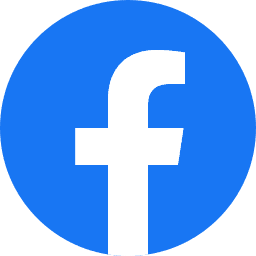Gum Disease Treatments at Dental Seva: Comprehensive Care for Lasting Oral Health
Taking good care of your mouth is essential, as it not only helps your looks, but your general health as well. With the above high prevalence of gum infection, there is yet the need for more attention paid to it concerning dental well-being. Millions of people suffering from gum disease, who if not treated, are plagued by a variety of serious conditions. This is why the gum disease treatment options at Dental Seva are designed to fix the root problem and return the gums to health.
At Dental Seva, we treat gum conditions to their root causes with state-of-the-art treatment and personalized care. Since we believe it’s as important to provide informed treatment as it is to treat a patient, we can help you make informed choices about your gum disease treatment.
Gums receding, or pulling back from the tooth exposing more of the tooth or tooth root, is often a commonplace issue for many patients. We’ll start the treatment of your gum disease with a full examination to determine the extent of the issue.
Gum Disease Treatment
When dealing with gum disease, the treatment options depend on how serious it is and your overall health. You can go for non-surgical treatments like scaling, root planning, and antibiotics. If it’s more advanced, surgery might be needed, which can involve pocket reduction or guided tissue regeneration. Usually, a gum specialist called a periodontist does these procedures.

What is Gum Disease Treatment?
Gum disease treatment involves a variety of dental procedures aimed at fighting infection and repairing tissue damage caused by periodontal (gum) disease. Typically, periodontists, who are specialists in gum health, perform these procedures, though general dentists can handle milder cases of gum disease.
Gum disease develops when plaque and tartar accumulate on your teeth, causing your gums to react with symptoms like redness, swelling, tenderness, and bleeding when you brush or floss.
The earlier you address gum disease, the better your chances for maintaining good oral health in the long run. In its initial stage, known as gingivitis, gum disease can be reversed. However, in the advanced stages, known as periodontitis, it can lead to gum and bone damage, resulting in the formation of pockets around your teeth. This can lead to further infection, loose teeth, and even tooth loss.
Nonsurgical vs. Surgical Treatments for Gum Disease: What are my options?
The choice between surgical and non-surgical treatments for gum disease hinges on various factors, such as:
The severity of gum disease.
Your current oral health status.
Your overall health condition.
- Your capability to adhere to post-treatment oral care instructions.
Both non-surgical and surgical treatment options for gum disease are accessible, with some periodontists also providing sedation dentistry to ensure your comfort during the treatment process. To gain further insight, it’s advisable to have a discussion with a healthcare provider.
Non-Surgical Gum Disease Treatments
Non-surgical treatments are typically suitable for individuals with early-stage gum disease, such as gingivitis or mild periodontitis. These non-surgical options include:
- Dental Prophylaxis
Dental prophylaxis is a routine dental cleaning, similar to the regular biannual cleanings with a hygienist. During this procedure, a healthcare provider removes plaque and tartar from the surfaces of your teeth. For individuals with gingivitis, this initial stage of gum disease can often be reversed through professional dental cleanings and improved at-home oral hygiene. Depending on your specific condition, your dentist or hygienist may recommend more frequent cleanings to keep harmful bacteria under control.
- Scaling and Root Planning
Scaling and root planing, considered a deep dental cleaning, goes below the gum line to eliminate plaque and tartar on the root surfaces of your teeth. In addition to thoroughly cleaning your teeth, your periodontist or dental hygienist smooths any rough spots on your tooth roots to prevent the reattachment of bacteria and plaque. Local anesthesia is administered by your periodontist to numb your gums and ensure your comfort during the procedure.
- Antibiotic Therapy
Your periodontist may employ antibiotics either as a standalone treatment or in combination with other methods. Common antibiotics for gum disease treatment include minocycline HCl or chlorhexidine. These medications can be placed in the periodontal pocket, the space between your gums and teeth.
- Laser Periodontal Therapy
In this procedure, a small laser is used by your periodontist to remove diseased tissue and eliminate bacteria beneath your gum line. Laser therapy is sometimes recommended as an alternative to traditional gum surgery, as it doesn’t require incisions or sutures.
Surgical Gum Disease Treatments
Individuals with moderate to advanced periodontal disease typically require surgical interventions to address the issue. Surgical treatments for gum disease comprise:
- Pocket Reduction Surgery (Flap Surgery)
During this procedure, your periodontist will make incisions along your gum line and gently move your gums away from your teeth temporarily. This allows them to access the roots beneath. They will then eliminate tartar buildup and clean your root surfaces. In some cases, they may also smooth and reshape areas of damaged bone to hinder bacterial growth. Finally, your gums are repositioned and sutured into place.
- Bone Grafting
Dental bone grafting utilizes your own bone, donated bone, or synthetic bone to reconstruct areas damaged by gum disease. The graft acts as a support structure, maintaining space until your body can regenerate new bone. Often, periodontists perform bone grafting in conjunction with pocket reduction surgery.
- Gum Grafting
Gum grafting employs your own tissue, donated tissue, or synthetic tissue to address gum recession, a common symptom of periodontal disease when gums pull away from your teeth. During gum grafting surgery, your periodontist places the tissue graft in areas where your gums have receded and secures it with sutures. If your own tissue is used, it is typically harvested from the roof of your mouth.
- Guided Tissue Regeneration
Periodontal disease can create gaps between your tooth root and bone. In guided tissue regeneration, your periodontist places a membrane in the damaged area to prevent your gum tissue from encroaching on the space where bone should regenerate. In many cases, periodontists combine this procedure with a bone graft to facilitate the bone regeneration process.
Procedure: How We Approach Treatment for Gum Recession
1. Initial Consultation and Diagnosis
Our dental specialists evaluate the health of gums with both digital x-rays and standard periodontal probing. This is to determine the depth of the gum pockets and degree of recession.
2. Deep cleaning (scaling and root planing)
Deep cleaning is the first thing we do in gum disease. We will clean your teeth, both above and below the gum line, as we try to remove plaque and tartar from the surfaces of your teeth. This clean will help to prevent any further recession.
3. Regenerative Procedures (if necessary)
In more advanced cases, we may recommend regenerative procedures which will include grafting procedures to promote a regrowth of lost bone & tissue.
4. Maintenance and monitoring
Once you have been initially treated, you will need to follow-up regularly to monitor your healing and to prevent recurrence of the gum disease.
At Dental Seva, we utilize minimally invasive techniques so that you are comfortable, we are precise with our work, and that you recover faster.
Why choose Dental Seva?
It is critical to choose the right dental provider to receive effective treatment and lasting results. Here are just a few reasons why Dental Seva is your best choice:
Experience and Expertise
We only employ certified specialists who are periodontists and have many years of doctor experience performing gum treatment and oral surgery.
Latest Equipment
We utilize the latest equipment, including digital X-rays, ultrasonic scalers and lasers for dentistry.
Individualized Care Plans
Every patient has an individual care plan that is specific to their needs and current health of their gums.
Hygiene and Comfort
We have worked hard to create a sterile and welcoming environment where you feel safe and comfortable during treatment.
Benefits of Using the Best Ulcer Treatment Mouth
According to the experts, disease can also appear in the form of painful ulcers or sores in the mouth. Our best ulcer treatment mouth advanced care protocols include ulcer treatments that provide immediate relief and long term protection.
Some of the advantages include:
Pain Relief: The topical treatments and the rinses we prescribe will provide immediate relief from discomfort.
Faster Healing: Along with the topical medications, the advanced laser treatments have been shown to enhance tissue regeneration and therefore speed the healing process.
Reduced Infection Risk: We utilize targeted antibiotics to reduce the risk of spreading an infection.
No Future Ulcers: When we are able to find the cause and treat it, we are able to avoid recurrence of ulcers in the future.
Ability to Function Normally: When the ulcers or sores are relieved, you are able to eat comfortably and speak normally.
Our holistic protocol provides that you are treated not only for the symptoms, but also the cause, so you can return to living without pain.
FAQ
Gum disease symptoms include bleeding gums when brushing, bad breath which won’t go away and receding gums.
Be sure of the below symptoms; bloody gums after brushing your teeth, constant bad breath, swollen gums and gums retracting from your teeth.
We recommend seeing a dentist for a checkup every 6 months, unless you are predisposed to getting affected gums, then quarterly checkups may be more appropriate.
The cost of treatment depends on the severity of the disease and treatment started. We can assure you that costs at Dental Seva are competitive and we give detailed estimates of the costs involved for you to go ahead with your treatment.
Research conducted in the realm of science has revealed that gum disease over a long period affects one’s health in serious ways such as heart diseases, diabetes and respiratory illnesses.




